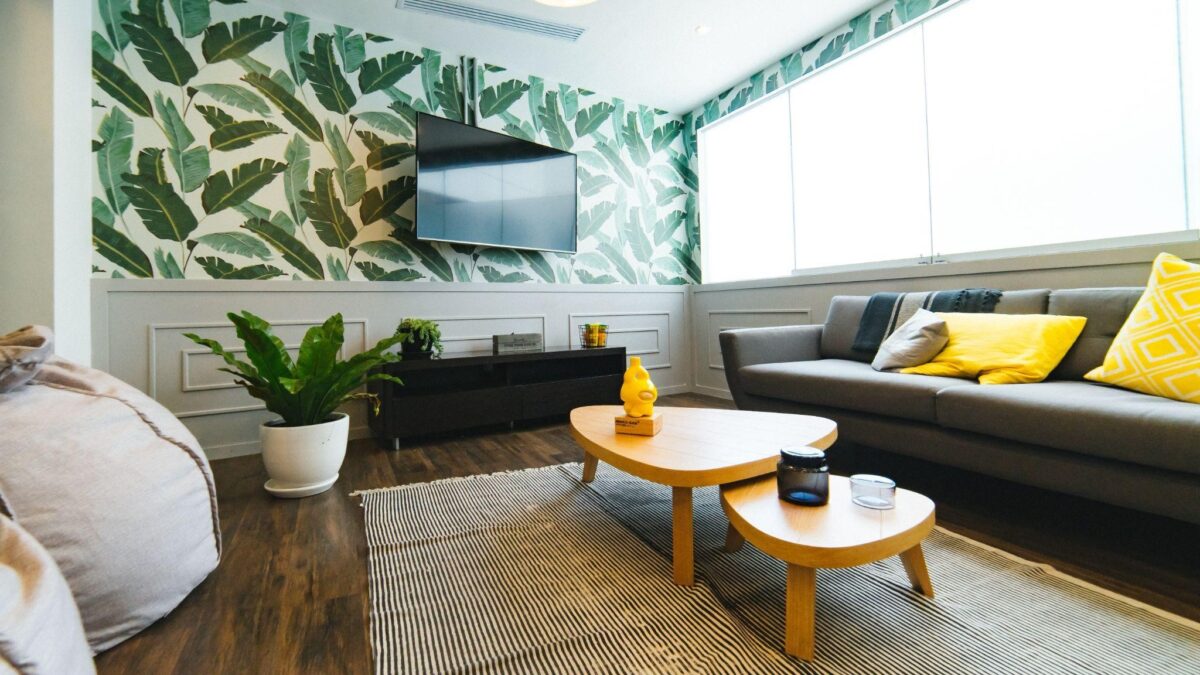In today’s fast-paced, urbanized society, nature is more important than ever. Not everyone can spend time outdoors. However, not everyone has the luxury of spending ample time outdoors. The solution? Bringing nature indoors by incorporating plants into our living spaces. Beyond their aesthetic appeal, indoor plants offer numerous benefits for our well-being and create a fresh and vibrant atmosphere within our homes. This article explores the transformative power of indoor plants, highlighting their positive impact on air quality, mental health, and overall home ambiance.
Which Room Is Best For Indoor Plants?
All rooms are good for houseplants. Nature is easy to incorporate into your home. We have some suggestions if you’re having problems.
Herb Gardens
Herb gardens in the kitchen are small, easy, and attractive. Small plants or herbs might be placed near a window in your kitchen. Soon, you’ll be able to pluck herbs from the stem, making your kitchen healthier.
Houseplants
There can never be enough plants in your house. It’s worth having a tiny plant or a big tree. You can decorate your home with plants. Incorporating plants for a fresh home vibe can involve utilizing the top of a small wardrobe as a space to display potted plants, adding a touch of nature to the room.
Flowers
Flowers are the simplest way to bring nature indoors or a ceiling. You can hang flower pots from your windows and put local florist flowers in a nice vase. Flowers also enhance your space, and they are simple and affordable.
Plant-Based Wall
A living green wall requires dedication. Green nature wall Plants won’t harm you in your sleep, but they’ll make your home appear amazing. A living green wall is a group of plants like moss and succulents with drainage and irrigation. You’ll have an ecosystem on your wall as these plants grow. If you don’t like the wall inside, install it outdoors.
What Are Some Creative Ways To Incorporate Plants Into Small Living Spaces?
Plants can be used creatively in limited areas. Maximize vertical space with hanging or wall-mounted plants. Display plants on windowsills or floating shelves. Macrame holders or beautiful terrariums can elevate plants. Adding greenery to limited rooms with little potted plants as table centerpieces or bookcases is another option. Remember to pick plants that complement your space’s light.
What Are The Benefits Of Incorporating Indoor Plants Into Our Living Spaces?
There are many benefits of incorporating plants indoors. Here we are going to discuss some of them:
Enhancing Air Quality
In cities, where we spend most of our time, indoor air pollution is a huge issue. Plants naturally purify indoor air. Plants produce oxygen by photosynthesis, enhancing indoor air quality. Spider plants, peace lilies, and snake plants filter formaldehyde, benzene, and xylene well. These plants can relieve respiratory issues, allergies, and headaches while improving air quality.
Boosting Mental Well-being
Our mental health and well-being are greatly improved by indoor plants. Studies have shown that even indoor plants can lower stress and improve our mood. Indoor plants create a soothing and calming environment, fostering relaxation and reducing anxiety. Their green foliage and natural aesthetics evoke a sense of tranquility and provide a visual respite from the hectic outside world. Taking care of plants also encourages mindfulness and provides a therapeutic outlet for nurturing and connecting with living organisms. Whether it’s a lush fern in the living room or a small succulent on a desk, incorporating plants into our homes helps create a sanctuary that promotes mental clarity and emotional balance.
Creating an Inviting Ambiance
Indoor plants have the remarkable ability to transform any space, making it feel more inviting and alive. Their presence adds texture, color, and dimension to interior design, creating a harmonious and natural ambiance. Large leafy plants like fiddle-leaf figs and monstera deliciosas can act as statement pieces, instantly adding drama and elegance to a room. Smaller plants, such as pothos, ivy, and peace lilies, can be strategically placed on shelves, windowsills, or even hung from the ceiling, adding a touch of freshness and charm. Hanging planters and vertical gardens are trendy options for incorporating plants in small spaces, maximizing visual impact while saving floor space. By carefully selecting plants that complement the existing décor and utilizing creative displays, we can personalize our living spaces and infuse them with vibrant, natural energy.
Conclusion
Plants can turn our houses into relaxing places. Indoor plants improve air quality, mental health, and ambiance. The wide variety of plant types means there’s a perfect match for any home, regardless of size or style. Whether you choose a collection of succulents, a hanging garden, or a statement plant, indoor greenery will enhance your living area and add a touch of nature to your daily life. Plants provide life to your home and improve your emotional and physical health.
